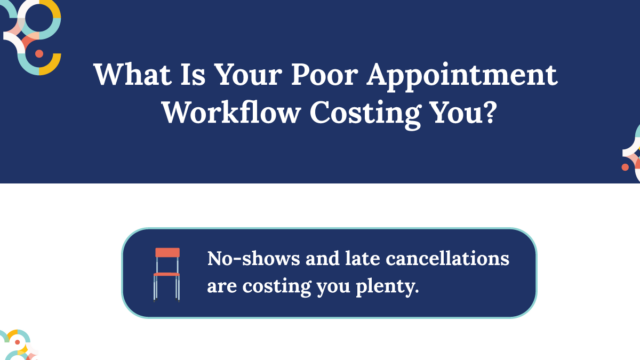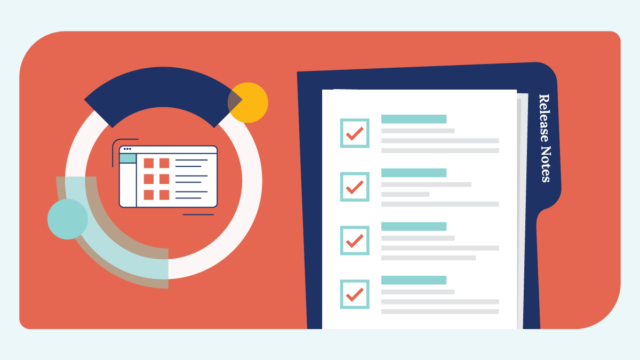Patients are used to hearing, “Please arrive 15 minutes early to fill out paperwork.” But that doesn’t mean they’re happy about it—and it’s definitely not doing your front office any favors.
In fact, more than 51% of healthcare consumers say convenience and access to care are the most important factors in choosing a provider. If your check-in process still relies on clipboards and paper forms, it might be time to rethink it.
Let’s break down why manual check-ins create headaches for staff and patients—and how going digital can improve the experience, reduce costs, and streamline operations.
Why should healthcare practices care about the cost of manual check-ins?
Just because you don’t see “manual check-in” as a line item on your financials doesn’t mean it’s free. These hidden costs can add up fast:
- Rising administrative burden: Between 15–30% of U.S. healthcare spending goes to administrative overhead—far more than other countries.
- Hidden inefficiencies: Manual check-in means repetitive tasks and more opportunities for human error, which leads to higher costs and lower patient satisfaction.
How does an outdated check-in process impact staff and patients?
Your staff and patients will feel the impact of an outdated check-in process, causing overall frustration, longer waiting times, and overburdened staff. Here’s how:
Front Desk Overload
- Paper-based workflows divert staff time from patient care, especially during peak hours, leading to long queues and burnt-out employees.
- Manual intake often takes 7–10 minutes per patient, which is time that could be better spent caring for patients.
Paper & Clerical Hassles
- Across the healthcare industry, manual, paper-based processes may add as much as $18 billion to $22 billion in unnecessary annual expenses.
- Patient records can be anywhere from 50 to more than 600 pages, increasing the cost for storage as well as the risk of misfiled or lost information.
Error-Prone Data Entry
- Manual transcription increases the potential for incomplete records, scanning errors, and data discrepancies
- Errors in scheduling or tracking appointments can increase the need to chase down patients for follow-up phone calls or rescheduling headaches.
Patient Friction
- Long waits and repetitive forms frustrate patients immediately, risking satisfaction and loyalty.
- Incomplete or incorrect records can lead to patients not getting the proper care they need, directly causing a risk to your reputation and revenue potential.
What are the real impacts and costs of manual check-ins?
Even if you can’t see them, these inefficiencies eat into your bottom line:
Wasted Staff Time & Money
- Each manual intake costs $4–$6 per patient (data entry, eligibility checks, insurance verification).
- Multiply that by high patient volumes, and labor costs skyrocket.
Industry-Wide Waste
- U.S. administrative costs hit $265 billion annually, with 7–15% of that considered waste.
- Compared to other countries, the U.S. has 44% more administrative staff, and physicians spend more time on admin work.
Workflow Bottlenecks
- Longer check-in times delay everything—nurse intake, provider visits, and the entire schedule.
- A full waiting room shifts staff focus from care to paperwork, often requiring extra labor hours.
Patient Satisfaction Drag
- Slow arrival processes create a negative first impression.
- Frustrated patients lead to frustrated staff, decreasing morale and efficiency.
How can technology fix these problems?
Today’s technology makes it easier than ever for healthcare practices to save time, cut costs, and even boost revenue. By swapping out old-school, paper-heavy check-ins for simple digital solutions, you can make the whole process faster, smoother, and way less stressful for both your team and your patients. Here’s what that looks like:
Automation of Intake
Digital forms cut intake time by 7–10 minutes, slash paper costs, approximately 3% of revenue, and lower error rates from manual entry.
Labor Savings
Automation frees your front desk to focus on patient care—not chasing paperwork.
Error Reduction & Accuracy
Integrated systems catch missing data and prevent transcription mistakes.
Enhanced Patient Experience
Contact-free check-in options (QR codes, texts, kiosks) reduce wait times and boost professionalism.
Operational & Financial ROI
- Practices recover efficiency and capacity, often saving millions over time.
- Real-time alerts improve scheduling control and patient flow.
Better Security & Compliance
- Fewer paper forms mean fewer privacy risks.
- Digital storage supports encryption, access controls, and HIPAA compliance.
Wondering how a digital check-in solution could speed things up and clear out those waiting room backups?
Here’s a roadmap for getting started:
- Audit your current process: How long does check-in take? What’s the resource drain?
- Quantify the impact: Calculate potential savings in staff hours, paper, and error rates.
- Pilot a solution: Start small—one provider or location—and track metrics.
- Scale thoughtfully: Roll out in phases with staff and patient support.
- Measure ROI: Track efficiency, satisfaction, and cost savings.
How does Solutionreach make patient check-ins faster—and help your practice grow?
Our Patient Check-In and Digital Intake tools are designed to eliminate the friction of manual workflows. Here’s how we help:
Automated Arrival Notifications
- Patients text “Here” or scan a QR code to check in instantly—no paper, no lines.
- Your team gets real-time alerts in the Take Action Calendar.
Trigger-Based Digital Intake
Forms are automatically sent and completed before the provider sees the patient.
Reduced Admin Workload
No more chasing paperwork—staff can process more patients without extra hires.
Faster Flow = More Appointments
Reclaim lost time slots and book more visits in a single day.
Revenue Impact
More appointments and fewer no-shows mean higher revenue and cleaner billing.
Key Takeaways
Manual check-in isn’t just old-fashioned – it’s costing you time, money, and patient loyalty. Every paper form adds hidden labor costs, errors, and delays that frustrate both your staff and your patients.
The good news? A digital workflow flips the script. You’ll:
- Save time: Your staff spends less time on check-ins and paperwork, thanks to automatic patient notifications.
- Enhance the patient experience: Patients spend less time waiting and more time focusing on their care.
- Increase intake completion rates: Intake forms are delivered and completed automatically, tied directly to the appointment, eliminating the hassle of manual follow-ups.
Bottom line: Go digital, and your team can focus on what really matters—delivering care and growing your practice.

To learn how outdated patient check-in processes are costing your practice time, money, and patient satisfaction, download our infographic guide, “What Is Your Poor Appointment Workflow Costing You?”
Download Guide


